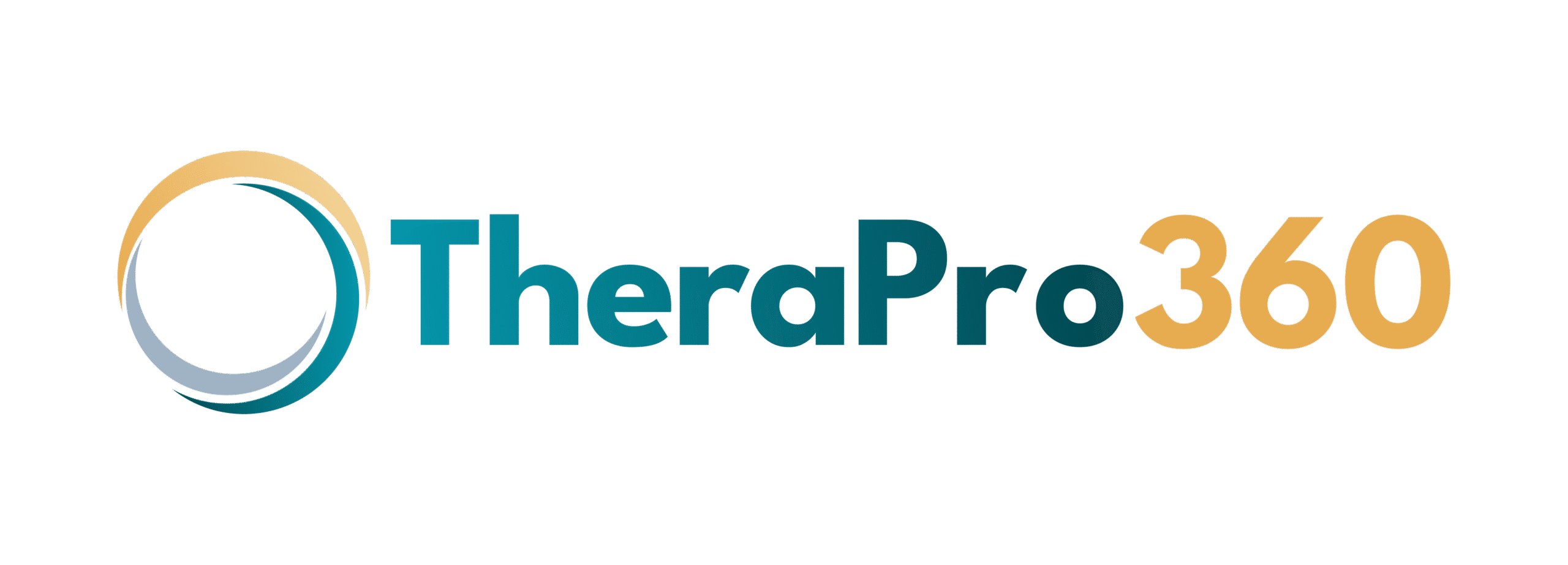
Blog
The Rise of Telehealth in Speech Therapy: What Every Therapist Should Know
Expert web designers ensure the site and software is easy to use.The Rise of Telehealth in Speech Therapy: What Every Therapist Should Know
The delivery of speech therapy has undergone a fundamental transformation. Once confined to in-person clinic visits, therapy is now accessible from virtually anywhere, thanks to the rise of telehealth. This shift, accelerated by global events, has moved from a niche offering to a core component of modern clinical practice. For speech-language pathologists (SLPs) and practice owners, understanding how to leverage telepractice effectively is no longer optional—it’s essential for growth, accessibility, and client satisfaction.
While many therapists have experienced teletherapy using basic video conferencing tools, true telehealth success lies in a more integrated approach. The most effective, secure, and efficient teletherapy is delivered through platforms that are deeply connected with a clinic’s core operational software.
This guide will walk you through everything you need to know about the rise of telehealth in speech therapy. We’ll explore the benefits, essential features, and compliance requirements, and show how integrating teletherapy within a practice management software for speech therapists can unlock new levels of efficiency and improve patient outcomes.
Understanding the Growth of Telehealth in Speech Therapy
Telehealth, or telepractice as it’s often called in the therapy world, is the use of telecommunications technology to provide clinical services remotely. This isn’t just a trend; it represents a significant and permanent evolution in how healthcare is delivered.
From in-person to online therapy — a major shift in care delivery
For decades, the model for speech therapy was straightforward: a client traveled to a clinic for a face-to-face session. While effective, this model presented inherent barriers related to geography, transportation, and scheduling. Telehealth dismantles these barriers, allowing an SLP in one city to connect with a client in a rural town hundreds of miles away. This shift expands the very definition of a “service area” and democratizes access to specialized care.
How the pandemic accelerated telepractice adoption
Before 2020, telepractice was a slowly growing field. The COVID-19 pandemic acted as a massive catalyst, forcing practices to adopt virtual care models almost overnight to ensure continuity of care. Therapists, clients, and payers who were once hesitant about teletherapy experienced its benefits firsthand. This widespread, forced adoption broke down long-standing resistance and proved the viability of remote service delivery on a global scale.
Why telehealth is here to stay for speech-language pathologists (SLPs)
What began as a crisis response has now become a strategic advantage. Clients have come to appreciate the convenience, and practices have recognized the efficiency gains. Payers, including Medicare and major commercial insurers, have updated their reimbursement policies to cover telehealth services permanently. Telehealth is here to stay because it offers a powerful combination of benefits: it increases access to care, provides unprecedented flexibility, and, when implemented correctly, can improve both clinical and financial outcomes.
What Is Speech Therapy Telehealth Software?
Not all video tools are created equal. While many therapists started with familiar apps like Zoom or FaceTime, dedicated telehealth software is specifically designed for the unique demands of a clinical setting.
Definition and purpose of telehealth tools for SLPs
Speech therapy telehealth software is a platform built to facilitate remote clinical sessions in a secure, compliant, and engaging manner. Its purpose is to do more than just connect two people via video; it’s designed to replicate and even enhance the therapeutic environment with specialized tools that support the clinical process for SLPs.
How teletherapy differs from traditional video conferencing apps
While standard video conferencing tools are great for meetings, they lack the critical features required for healthcare. Here’s how dedicated telehealth software is different:
- HIPAA Compliance: This is the most significant difference. Professional telehealth software is built with security measures like end-to-end encryption to protect patient privacy, a requirement that standard video apps do not meet.
- Clinical Tools: These platforms often include interactive whiteboards, screen-sharing capabilities optimized for therapy materials, and integrated digital resources.
- Integration: True telehealth solutions are not standalone; they are designed to connect with your EMR and billing systems.
Why integration with practice management software matters
The most powerful telehealth solutions are those that are a core part of an all-in-one practice management software for speech therapists. This integration creates a seamless workflow:
- An appointment is scheduled in the system as a “telehealth session.”
- A secure, unique video link is automatically generated and included in the appointment reminder sent to the client.
- The therapist launches the session directly from their calendar within the software.
- After the session, the system can automatically create a billable claim based on the appointment details.
This eliminates the administrative hassle of managing separate systems for scheduling, video calls, and billing, which saves time and reduces errors.
Key Benefits of Telehealth for Speech Therapists and Clients
The advantages of telepractice extend to everyone involved. It creates a more flexible, accessible, and efficient model of care that benefits the practice’s bottom line and the client’s clinical journey.
Expanded access to care for remote or underserved clients
Telehealth removes geographic barriers, allowing your practice to serve clients who live far from your physical clinic. This is a game-changer for families in rural areas or for those seeking a specialist who isn’t available in their local community. It also provides a vital option for clients with mobility challenges who may find it difficult to travel to in-person appointments.
Reduced no-shows through flexible scheduling and virtual options
Life happens. A child might be mildly sick and can’t go to the clinic, or a parent might have a last-minute transportation issue. In the past, these situations would result in a no-show and lost revenue. With telehealth, you can easily pivot the appointment to a virtual session, ensuring continuity of care and protecting your revenue. The sheer convenience of joining a session from home dramatically reduces no-show rates.
Better progress tracking through integrated digital documentation
When your telehealth platform is part of your practice management software, documentation becomes more streamlined. Therapists can take notes directly within the system during a virtual session. Data from digital activities used in the session can be easily captured and logged against the client’s goals, leading to more accurate and efficient progress tracking.
Convenience and continuity for both clients and clinicians
For clients, telehealth means no travel time, no traffic, and no time spent in a waiting room. For clinicians, it offers the flexibility to work from home, which can improve work-life balance and reduce burnout. This convenience factor is a major driver of both client and staff satisfaction and retention. It also ensures that therapy can continue even when families are on vacation or have other travel commitments.
Essential Features of Speech Therapy Telehealth Software
When evaluating telehealth solutions, look for platforms that offer a robust set of features designed specifically for the needs of therapy practices.
Secure, HIPAA-compliant video and messaging
This is non-negotiable. The platform must be fully HIPAA-compliant, with end-to-end encryption for all video and audio streams. The vendor must be willing to sign a Business Associate Agreement (BAA). Any platform that does not meet this standard should not be considered for clinical use. Secure messaging capabilities within the platform are also essential for compliant communication outside of sessions.
Screen sharing, interactive tools, and whiteboards
Effective teletherapy requires more than just talking. Look for features that enhance engagement:
- Screen Sharing: Allows the therapist to share digital flashcards, games, or worksheets from their computer.
- Interactive Whiteboard: A shared digital space where the therapist and client can draw, write, and interact together.
- Annotation Tools: The ability for both participants to draw or point on a shared screen to highlight specific items.
Session recording and progress note integration
The ability to securely record a session (with client consent) can be a valuable tool for therapist review, training, or for sharing clips with parents to demonstrate a technique. The platform should also allow the therapist to easily open the client’s chart and write their progress note during or immediately after the session, linking the documentation directly to the telehealth appointment.
Automated scheduling, reminders, and billing sync
As mentioned, integration is key. The telehealth feature should be part of a larger system that automates the entire workflow. This includes scheduling the virtual session, sending automated reminders with the video link, and syncing the completed appointment with the billing module to ensure accurate and timely claim submission.
How Practice Management Software Supports Telehealth Success
The success of your telehealth program hinges on its operational efficiency. An integrated practice management software for speech therapists provides the backbone for a smooth and scalable telepractice service.
Unifying scheduling, documentation, and billing in one platform
An all-in-one system eliminates the chaos of juggling multiple, disconnected tools. Your schedule, client records (EMR), billing, and telehealth platform all “talk” to each other. This creates a single source of truth and a seamless flow of information, which drastically reduces administrative workload and the potential for error.
Simplifying virtual session setup and patient communication
With an integrated system, setting up a virtual session is as easy as checking a box on the appointment scheduler. The system handles the rest—generating the link, sending it to the client, and placing a launch button on the therapist’s calendar. All communication about the appointment happens through the centralized platform, either via automated reminders or the secure patient portal.
Real-time data sharing between clinicians and administrators
When a therapist completes a telehealth session and signs their note, the billing department can see it immediately, ready to be processed. This real-time visibility ensures that there are no delays between service delivery and claim submission, which is crucial for maintaining a healthy revenue cycle.
Enhancing overall patient engagement and satisfaction
A smooth, professional, and easy-to-use telehealth system enhances the client’s perception of your practice. When it’s easy to book, easy to join, and easy to pay, client satisfaction soars. This positive experience is a major driver of both retention and new client referrals.
Addressing Compliance and Security in Telepractice
Delivering healthcare remotely carries a significant responsibility to protect patient privacy. Understanding and adhering to HIPAA is paramount.
Understanding HIPAA and data protection standards
The Health Insurance Portability and Accountability Act (HIPAA) sets the national standard for protecting sensitive patient health information (PHI). The HIPAA Security Rule specifically requires healthcare providers to implement administrative, physical, and technical safeguards to ensure the confidentiality, integrity, and security of electronic PHI.
How encrypted messaging and secure portals safeguard PHI
A compliant telehealth platform uses several layers of security:
- End-to-End Encryption: This ensures that only the participants in the session can see or hear the content. No one, not even the software provider, can access the video stream.
- Access Controls: Secure logins and passwords ensure that only authorized individuals can access the platform.
- Secure Patient Portals: These portals provide a safe environment for clients to access their information, send messages, and make payments without resorting to insecure channels like personal email.
Best practices for teletherapy privacy and consent
Technology is only part of the solution. You also need strong policies and procedures.
Checklist for Teletherapy Privacy:
- [✓] Obtain Informed Consent: Have clients sign a specific consent form for telehealth that outlines the benefits, risks, and privacy considerations.
- [✓] Use a Private Location: Advise both therapists and clients to conduct sessions from a quiet, private space where they cannot be overheard.
- [✓] Secure Your Devices: Ensure all devices used for teletherapy have password protection and up-to-date antivirus software.
- [✓] Avoid Public Wi-Fi: Never conduct sessions over unsecured public Wi-Fi networks.
Common Challenges in Speech Therapy Telehealth (and How to Solve Them)
Virtual therapy presents a unique set of challenges. Anticipating and planning for them can make the experience smoother for everyone.
Managing client engagement during virtual sessions
Keeping a young child focused and engaged through a screen can be difficult.
- Solution: Use highly interactive and fast-paced digital materials. Incorporate movement breaks, use virtual backgrounds and filters, and get parents involved as your “in-person assistant” to help facilitate activities.
Handling technology barriers and connectivity issues
Not all clients are tech-savvy, and internet connections can be unreliable.
- Solution: Conduct a brief “tech check” with new telehealth clients before their first session to test their camera, microphone, and internet speed. Provide a simple, one-page guide with troubleshooting tips. Have a backup plan, such as switching to an audio-only call if the video fails.
Maintaining rapport and motivation through a screen
Building a strong therapeutic alliance can feel different when you’re not in the same room.
- Solution: Dedicate the first few minutes of each session to personal check-ins and rapport-building, just as you would in person. Use expressive facial expressions and gestures. Acknowledge the challenges of virtual interaction and praise clients for their efforts.
Tips for training clients and caregivers for online participation
Empower caregivers to be active participants.
- Solution: Clearly explain the parent’s role before the session begins. Provide coaching on how to position the camera, minimize distractions, and assist with hands-on activities. This turns them into a valuable therapeutic partner.
Measuring the ROI of Telehealth for Your Practice
Investing in a robust telehealth platform delivers a measurable return on investment (ROI) by improving efficiency, increasing revenue, and reducing costs.
Tracking no-show reduction and session utilization rates
Compare your no-show rate for in-person appointments to your telehealth appointments. You will likely see a significant reduction in no-shows for virtual sessions. Also, track your therapist utilization rates. Telehealth can help fill gaps in schedules, leading to higher overall productivity.
Evaluating time saved through automation and integration
Calculate the administrative time saved by using an integrated system. How much time was previously spent generating and sending video links, manually creating claims for virtual sessions, or playing phone tag? Quantifying this time savings in terms of labor cost reveals a clear ROI.
Comparing revenue growth before and after telehealth adoption
Look at your overall revenue before and after implementing a comprehensive telehealth program. The combination of reduced no-shows, expanded service area, and improved efficiency often leads to measurable top-line growth.
Long-term benefits for scalability and client retention
Telehealth makes your practice more scalable. You can add clients from a wider geographic area without needing to invest in more physical office space. The convenience and flexibility offered by telehealth are also powerful drivers of client satisfaction and retention, increasing the lifetime value of each client.
Choosing the Right Speech Therapy Telehealth and Practice Management Software
Selecting the right technology partner is a critical decision for your practice.
What to look for in an all-in-one platform
The ideal solution is a single, unified platform that combines a therapy-specific EMR, smart scheduling, integrated billing, and a built-in, HIPAA-compliant telehealth module. This all-in-one approach provides the most seamless and efficient experience for both your staff and your clients.
Evaluating user experience for both therapists and clients
The software should be intuitive and easy to use. During a demo, pay close attention to the user interface. Is it clean and easy to navigate? How many clicks does it take to start a session or schedule a virtual appointment? A clunky, complicated system will create frustration and hinder adoption.
Integration with EMR, billing, and scheduling tools
If you are considering adding a telehealth solution to your existing software, scrutinize the level of integration. Does it offer true, real-time data syncing, or does it require manual data exports and imports? A deep, seamless integration is essential to unlock the full efficiency benefits.
Questions to ask during a software demo or trial
Checklist: Key Questions for Vendors
- Is your telehealth platform fully HIPAA compliant, and will you sign a BAA?
- Can you demonstrate the end-to-end workflow, from scheduling a telehealth visit to billing for it?
- What interactive tools (whiteboard, screen sharing) are included?
- How do you handle client consent for telehealth and session recording?
- What kind of training and technical support do you provide for both our staff and our clients?
The Future of Telehealth in Speech Therapy
Telehealth is not a static technology; it is continually evolving. The future will bring even more powerful tools to enhance remote therapy.
AI-driven tools and virtual reality for therapy enhancement
Artificial intelligence (AI) will play a larger role in analyzing session data, providing real-time feedback to therapists, and personalizing therapy activities. Virtual Reality (VR) and Augmented Reality (AR) will offer immersive, life-like environments for clients to practice social communication or articulation skills in a safe, controlled setting.
Hybrid care models combining in-person and virtual sessions
The future of practice is not “in-person vs. telehealth” but rather a flexible hybrid model. A client might have an in-person assessment, followed by several virtual sessions, and then another in-person visit to check progress. This “best of both worlds” approach offers maximum flexibility and convenience.
Predictive analytics and outcome-based teletherapy
Software will use data to predict which clients are most likely to succeed with teletherapy and which may benefit from a hybrid or in-person model. This will allow for more effective, outcome-driven care planning.
Conclusion: Why Telehealth Is a Must-Have for Modern Speech Therapy Practices
Telehealth has fundamentally and permanently changed the landscape of speech therapy. It has proven to be an effective, convenient, and efficient model of care delivery that expands access and improves outcomes. For practices looking to grow and thrive, embracing telepractice is no longer a choice but a necessity.
Embracing technology for better patient outcomes
By leveraging telehealth, you can provide more consistent care, reduce interruptions caused by life’s logistical challenges, and engage clients in new and exciting ways. This leads to better clinical outcomes and more satisfied families.
How telehealth drives efficiency and client satisfaction
An integrated telehealth system streamlines your operations, reduces administrative burden, and cuts down on lost revenue from no-shows. This efficiency, combined with the convenience offered to clients, creates a superior experience that sets your practice apart.
Why integrated practice management software empowers the next generation of SLPs
The future of speech therapy belongs to practices that can seamlessly blend clinical excellence with technological savvy. An integrated practice management software for speech therapists with a built-in telehealth module is the essential tool that empowers SLPs to deliver high-quality care, however and wherever it’s needed.
FAQs About Speech Therapy Telehealth Software
Is telehealth as effective as in-person speech therapy?
Yes. A large body of research has shown that for most clients and conditions, teletherapy is just as effective as traditional in-person therapy. The American Speech-Language-Hearing Association (ASHA) supports telepractice as a valid method of service delivery. Success often depends on the client’s age, diagnosis, and engagement level, but for many, the outcomes are equivalent.
How can I ensure HIPAA compliance during teletherapy?
The most important step is to use a dedicated, HIPAA-compliant telehealth platform from a vendor who will sign a Business Associate Agreement (BAA). Additionally, follow best practices like obtaining informed consent, using a private location for sessions, and ensuring your devices are secure. Avoid using non-compliant platforms like standard FaceTime or Facebook Messenger for clinical sessions.
What’s the best software for small speech therapy practices?
The best software for a small practice is an affordable, all-in-one practice management software for speech therapists that includes a built-in telehealth module. This integrated approach is more cost-effective and far more efficient than trying to piece together separate systems for scheduling, billing, and video conferencing.
Can telehealth integrate with my current practice management system?
Some telehealth platforms offer integrations with existing EMRs or practice management systems, but the quality of these integrations varies widely. Often, a “bolt-on” solution is not as seamless as a telehealth module that was built as a core part of the practice management software from the ground up. It’s crucial to investigate the depth of the integration before purchasing.
Why TheraPro360?
Run your practice with simplicity with our streamlined scheduling, seamless telehealth integration, centralized patient portals, intuitive calendar management, and automated invoicing.
Get Started Today















